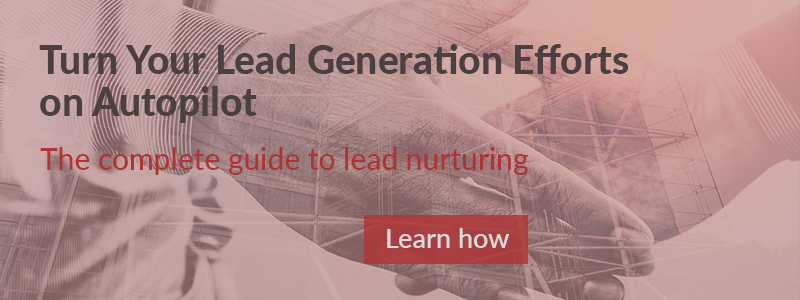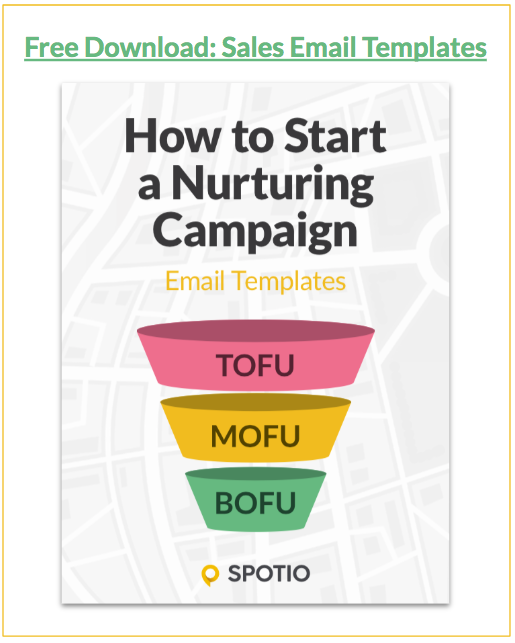A strong and well established lead funnel is vital to the success of a sales process. Not only do sales funnels provide visibility, they also establish a process that holds each rep accountable and ensures they’re properly funneling through the sales cycle. The result? An organized and proven process that will guide everyone to closing more deals.
Lead funnels commonly have seven stages. Sales reps don’t often think about how a lead moves through each individual stage of the sales process, making it essential for the company to clearly identify how they expect prospects to convert to paying customers. Every stage is absolutely necessary if you want to advance the sale.
The stages of the lead funnel can be as simple as:
1. Identify new leads
2. Contact prospect and set appointment
3. Qualify prospects
4. Needs assessment and pitch
5. Overcome objections
6. Close the sale
7. Get referrals
Table of Contents
Understanding The Basic Stages Of A Lead Funnel
How to Start a Nurturing Campaign
Turning On Your Lead Funnel To Make It Rain Leads
How these stages are achieved is unique to every business because the sales process rarely plays out in the same fashion each time. A weak and inconsistent process produces mistakes resulting in lost leads, significant inefficiencies and wasted time that prohibits the business from generating additional revenue and scaling the company.
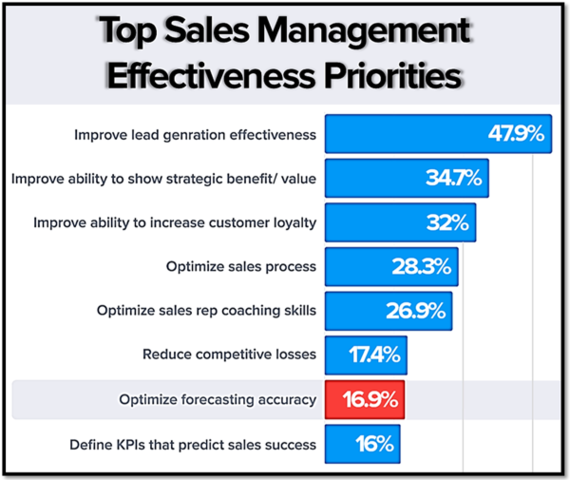
Improving lead generation effectiveness is actually listed as the single highest priority by sales managers. Your lead funnel plays a critical role in this as it helps put things into perspective for you to see the challenges and possibilities within your pipeline. A clear view of your funnel not only helps you maintain complete control of your pipeline and its management, it also helps you to plan all of your future actions moving forward.
Failing to establish an efficient sales process is guaranteed to compromise sales decision making. You’ll be considerably more organized when you have a firm grasp of your lead funnel and are able to determine which prospects are most likely to close as opposed to relying on instinct.
What Is A Lead Funnel?
By definition, a lead funnel is an outlined map of the buying process that guides prospects from the beginning of your site to the point they convert into a customer, using a logical step by step sequence. But this will vary depending on who you’re targeting.
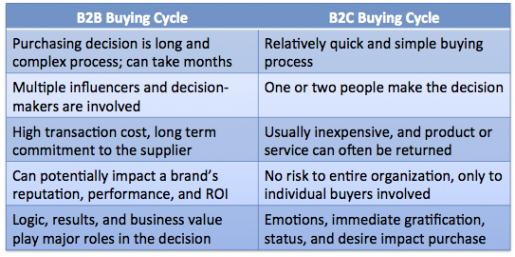
Although the end goal is the same, there are notable differences between how you should structure your funnel depending on if you’re selling to other businesses or directly to consumers. B2C funnels are high volume, low value. While B2B is low volume, high value. Meaning, the B2B journeys requires more work, and tend to focus on the consideration stage, whereas the B2C’s focus is on awareness.
Lead funnels are divided into multiple stages, typically seven as mentioned above, and refer to the customer buying journey that companies lead customers through when making a purchase. A sales pipeline is one of the best tools to use to forecast how much revenue your sales reps are expected to generate during a given time period.
Your lead funnel can easily be viewed as a real funnel. When something enters at the top, it gets filtered down. As it moves toward the bottom, it gets cleaned into a more purified form. Think of straining the pulp from your orange juice. Lead gen funnels are really no different.
You start with a large quantity of prospects and sift through them to identify the ones that are legitimate leads. As you filter them out, you nurture the qualified leads and convert to paying customers at the bottom of the funnel.
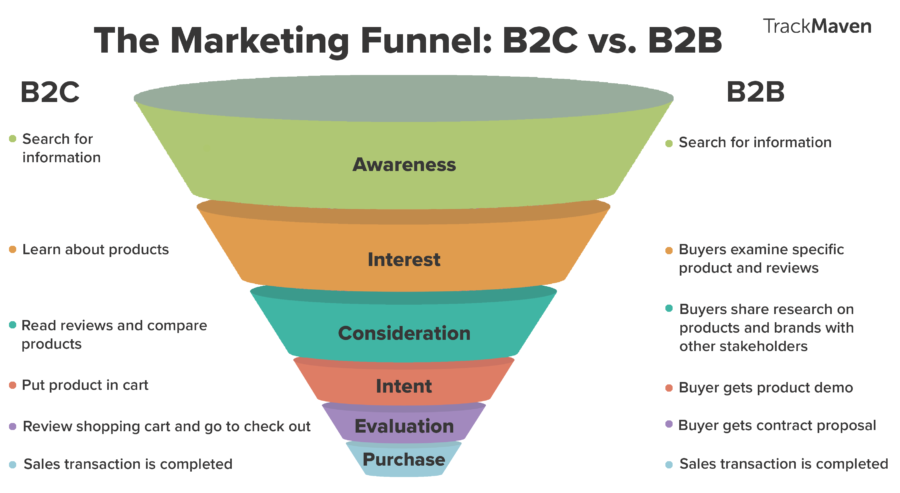
It’s also used to measure how close a sales rep, or the team, is to achieving sales targets. If you have a specific way of interacting with potential customers or a unique way of closing deals, you likely already have a sales pipeline whether you realize it or not.
The key to success in sales is being able to efficiently and effectively manage your sales pipeline. Mastering this skill significantly improves your chances of increasing revenue.
With 44% of executives reporting they believe their organization is ineffective at managing their sales pipeline, there’s a greater emphasis being placed on this skill than ever before.
The Lead Generation Game Has Changed
Back in the “good ole days” buyers were far less educated. The way consumers learned about new products and services was through salespeople, but those days are over. In today’s information-rich society, customers have access to more information than ever before.
With access to so much information, 57% of the buying process is now over before a person ever speaks to a salesperson.
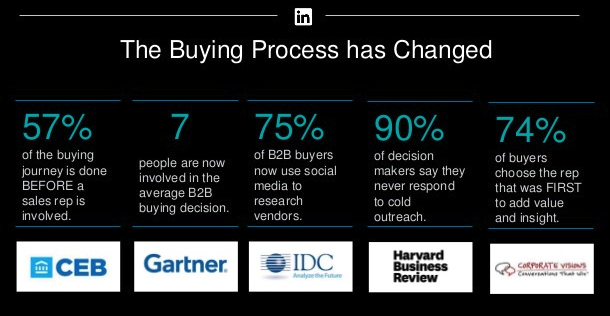
With nearly 3 million blogs being published each and every day, customers can quickly and easily find exactly what they’re looking for. And they expect to. Because there’s no shortage of messaging, research, and educational resources, they’re able to be much pickier because they’re well-informed before you have your initial conversation with them. The traditional methods of contacting prospects have to be adapted.
There’s no way around it. A 2017 study by SEJ found that 70 – 80% of the buyers today ignore more ads than at any other time. Instead of relying on the information blowing up their inbox, they’re taking the initiative to seek out content from sources they know and trust.
Despite this trend, MarketingSherpa reports that approximately 68% of B2B organizations still have yet to map out a lead funnel!
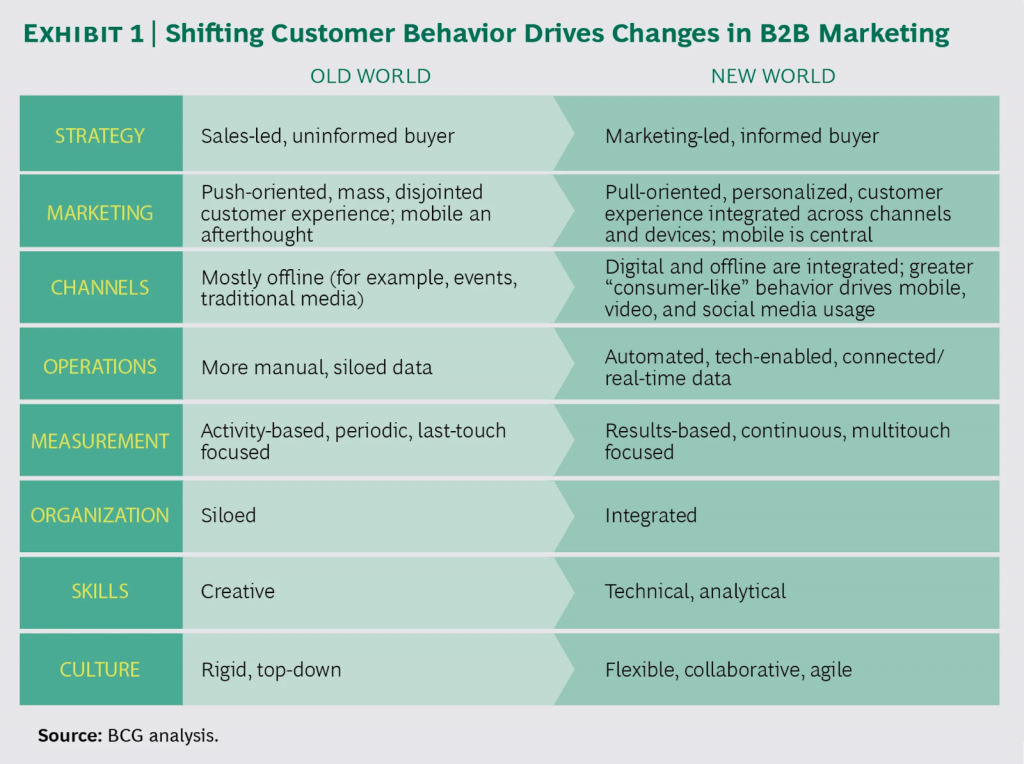
What this means for field sales teams is that building trust and rapport with potential customers is more important than it’s ever been. A successful lead funnel relies on this concept and the ability to gain interest from the prospect prior to them speaking with a sales rep. The old school sales tactics that worked in the past no longer fly with the overwhelming amount of information available today.
The result of this has led to budget increases in lead generation activities like website optimization, social media, SEO, content and email marketing, and many others. With the amount of money being dedicated to lead generation, the focus has significantly shifted from the quantity of leads generated to the quality of those leads.
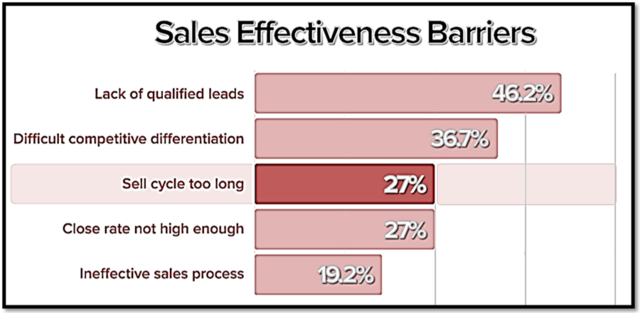
Despite the overwhelming amount of information available, leads need to be educated and nurtured before the sales team even reaches out to make contact. Because of this, the B2B buying process is becoming longer and longer. It’s this making a formidable barrier for field sales organizations.
This is exceptionally important when interacting with companies that involve multiple decision makers in the process. The increased demand for consumer education requires sales and marketing to be strategically aligned.
How to Start a Nurturing Campaign
One of the more common responses you’ll be met with after you finish up your pitch is, “sounds interesting, can you just send me some info?” Which is code for, “thanks, but no thanks.”
This is where the mass majority of sales reps just leave a marketing brochure and hope that maybe someday in a moment of clarity, the prospect will call you… ready to buy.
But there‘s a better way.
Instead of just leaving a brochure, ask for their email address. Leaving them with a brochure is great, but the value in leaving a brochure pales in comparison to leaving with their email address. Think of it like this: there’s a reason why every retail store asks you for your email when you purchase that fancy new pair of shoes.
Once you have a nice list of targeted email address, you are ready to kick off your lead nurturing campaign.
Lead nurturing is all about timing – just because someone isn’t ready to buy doesn’t mean they won’t be ready in 2, 3, or 6 months from now. By further educating them on your products and staying top of mind you give yourself a chance to extend the sales conversation.
A lead nurturing campaign can turn casual interest prospects into clients who are ready to spend money with you. It isn’t about selling directly, rather, helping potential clients to understand the value of what you do, educating them about their options and giving them the knowledge they need to make a decision.
What You Need
Email List
Once you have emails for those you want to sell to, implement an email automation service like MailChimp, HubSpot, or Constant Contact to help you run, organize, and send your emails to the right people at the right time. Having an automation tool like the ones above will turn your non-existent marketing department into a well oiled email marketing and lead nurturing machine.
Target Persona
Your list has a lot of different prospects on it, but in order to get the most out of your nurturing campaign, you need to have a specific persona in mind. What type of buyer is this persona? What are they most interested in learning? What questions to do they have?
Content to Share
The idea of lead nurturing is to educate – so you need to have helpful, actionable content to deliver on a regular basis. Content can include blogs, special offers, fact sheets, reports, videos or anything else that is helpful and informative.
Specific Offer
Yes, lead nurturing is about building relationships. But at the end of that road, you want your list members to make a decision on buying. If you sell a lot of services, select just one service or package of services that you want your list members to purchase at the end of your sequence.
How to Structure Your Emails
Each email in your lead nurturing sequence has a different purpose, but they have the same basic format.
Subject Line
This should be no more than 45 characters that piques interest and gives recipients a good reason to open the message.
Headline
Starting off the body of the email with a short headline will get attention and create a desire to keep reading.
Email Body
Keep this section short and sweet, roughly about 100 words in total, and include one call to action (CTA) that’s directly related to the goal of this particular email
Hyperlink
Knowing which links are being clicked in your lead nurturing campaign is essential because it’s going to take the customer directly to your content and website.
Lead Nurturing in 3 Easy Steps
Step #1 | Email Goals & Delivery
Sending emails at a specific sequence is essential. Too many emails too quickly can lead to unsubscribes – and spacing them out too much might mean that your list members forget who you are. A good rule of thumb to follow for lead nurturing campaigns is Day 1, Day 5, Day 10 and Day 15. It’s not quite once a week, but spaced out enough to be memorable without being annoying.
Step #2 | Set Up Offer
You may have an opt-in offer working for you already on your site, but if you don’t, this is a must for lead nurturing. If you aren’t sure what to share, think back to your target persona. What are their biggest questions? How can you help bridge gaps in their knowledge?
Step #3 | Create Emails
Each email in your sequence has a specific purpose. Don’t write your emails without understanding the goal and call to action for each!
Sample Email Sequence
Day #1 | Introduction
Introductory email that reminds and/or introduces your company and the reason you’re reaching out. For example, your offer could be a free consultation or discount.
Day #5 | New Content
Offer new content related to how your product or service will benefit them. You can use a video or blog post that includes a call to action, or to a video or a blog post on your site that gives industry tips.
Day #10 | New Long-Form Content
Offer new long form content like a whitepaper or report. A whitepaper around the ROI of your product or service. Tell them how much they can save or grow when they partner with you.
Day #15 | Special Offer
Introduce your special offer and ask your list members to take action. This is where you would introduce a discounted rate if they sign up by a certain time
Understanding The Basic Stages Of A Lead Funnel
The main goal should be to capture, educate, inform and nurture these prospective buyers until they’ve made a purchase with your company. The lead funnel is broken down into three basic stages, each with its own specific purpose: Top of the Funnel (ToFu), Middle of the Funnel (MoFu), Bottom of the Funnel (BoFu)
Top of the Funnel (ToFu)
The ToFu can be thought of as the awareness stage. This is the point of the buying journey where your field sales reps are striving to attract a large amount of potential leads to work. The goal for the top of the funnel is bring attention to your product and company.
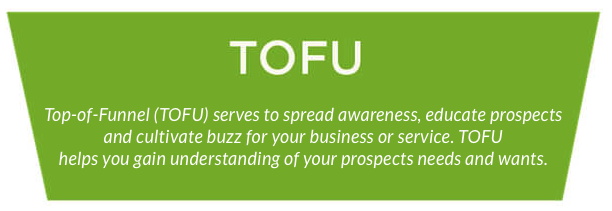
This is where you get people into the funnel through prospecting efforts and by collecting contact information from the buyers you speak with. Whether the conversation ended positively or the prospect said they weren’t interested, asking for the decision maker’s email address is crucial to their education.
Once you have the prospect’s contact information, they get placed into an email or nurture campaign. The content being sent to these customers should be relatively basic and not go too in-depth regarding product functionality details. The message should be educational in nature during this discovery phase.
These are not leads who are ready to speak with sales yet because they haven’t had time to do their own organic research and don’t yet trust you. It’s very important to avoid engaging them in direct sales efforts. Give them time and help your company to be at the top of their mind.
Use your ToFu efforts to introduce your brand to the consumer and establish yourself as an industry leader.
Keep in mind it doesn’t always have to be specifically about your company. You can send information that you think they would find useful. Whatever you send, it needs to be relevant and well thought out.
Types of content to offer and messaging to send during this phase:
- Educate them on the product or service to help them understand more. Do not sell your company at this point.
- Entice your prospect with an offer such as a discount or answering common questions they might have (FAQs).
- Provide educational examples of how to solve problems they may be experiencing relavant to your company – i.e. – 3 ways to fix a roof leak
Middle of the Funnel (MoFu)
Prospects who display buying signals but still aren’t necessarily ready to pull the trigger are then moved to the middle of the funnel (MoFu). You’ll get a mix of buyers in this stage. Some will be self-directed and not want to hear what you have to say. They’re most likely part of the 70 – 80% of buyers who are ignoring your messages.
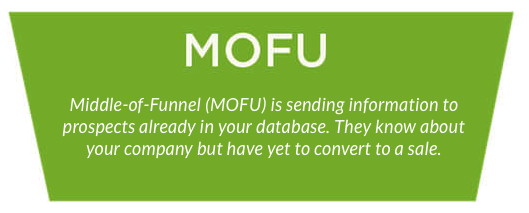
The other group are prospects your sales reps spoke with but didn’t turn into customers for one reason or another. The tricky situation in the middle stage is continuing to educate these consumers that still aren’t ready to buy while not being pushy.
The content you send in your middle funnel is designed to bridge the gap between the initial awareness made at the top of the funnel and the final sale at the bottom of the funnel. The content sent in this stage should be tailored toward the decision-making process and often makes up the bulk of your conversions.
Types of content to offer and messaging to send during this phase:
- Explain your services and offerings and how it can benefit them.
- Send a case study. These are a great way to prove that your offering has helped solve real problems for actual customers
- Ratings and reviews. Send along links to public reviews of your product; consumers find user feedback very powerful.
Generally speaking, prospects at this point should be evaluating the different solutions available to them that potentially meet their needs and solve their pain points. Lead nurturing is essential in the middle stage.
The material you provide should help potential customers further evaluate your product or service, build consumer loyalty to help increase lifetime value and differentiate yourselves from the competition. The MoFu is where most field sales organizations struggle the most.
A lot of companies do a fairly decent job at making it rain leads at the top, but struggle to fill the heart of their lead funnel. Education and relationship building carry a lot of weight in the middle of the funnel.
Bottom of the Funnel (BoFu)
By now you’ve collected leads with ToFu content and nurtured them with MoFu content. The next stage hinges on acting upon buyer intent to close the sale.
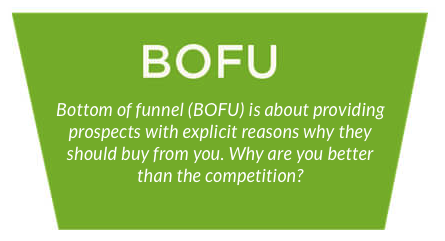
Qualified leads are comfortable with your brand, so be forthright in helping them evaluate your product or service. Sales and marketing should work together to nurture the decision-making process.
Minimize cold feet, emphasize the value proposition, and convince the buyer your brand is the right choice. This often requires a direct interactive experience, such as a contract.
Types of content to offer and messaging to send during this phase:
1. Give them on ROI calculator to show them exactly how they will get a return on their investment.
2. Leave them with side by side comparisons that measure you up against the competition.
3. Offer coupons and discounts to entice them to “act now”.
Creating Your Funnel
Get Their Email
An easy way to do so is when they ask you to “give me some information.” You say: “Sure, I’d be happy to. What email address should I send it over to?” Then you log their email address in SPOTIO, or whatever tool you’re using to track your sales activity. You are, of course, using a tool to track your sales activity right?
To Make the Email Nurture
To make the email nurture process a breeze, you need to choose an email marketing provider that allows you to schedule the sending of emails and one that allows you to add new contacts to the nurturing sequence. You do not want to do this manually as it’s an unnecessary waste of your time. Some automation platforms we recommend: MailChimp, Constant Contact, Get Response, Omnisend, HubSpot, and Marketo.
Once you have your email marketing platform in place, now it’s time to connect it to your CRM with an integration platform like via Zapier.
Now, prospects will be sent well timed and informative emails from you. Why is this so powerful? Because it will keep you and your service top of mind, and when they’re finally ready to make a purchase, odds are in your favor that they choose you.
An added bonus to email automation services is that you will be notified if emails are opened or clicked. When you have this information, you can then reach out to the prospective customer knowing they have knowledge and potential interest in your service.
Once the funnel is segmented into different sections that represent how far along a prospect is in the buying process, you have to determine where the various actions fall in your funnel. Having a clear understanding of the process helps you to optimize your marketing campaigns to ensure that leads come out at the bottom of the funnel as customers compared to getting stuck or falling out in the middle.
Every business has its own unique processes and situations. Your actual lead funnel may differ slightly from the model we present, so for the purpose of this series we’re describing some of the most common, basic stages involved in the funnel.
Turning On Your Lead Funnel To Make It Rain Leads
You’ve spent the time to map the customer buying journey and list out your sales process in order to establish the stages of your lead funnel. Now it’s time for this machine to take off and make it pour.
To turn your lead funnel on, you need three things that will all generate revenue. While there’s still a little bit of setup required in order to get this thing going, these are the actions that are going to actually get prospects into your funnel so that they can convert to paying customers.
The Result
An ironclad funnel and lead nurture process is one that is focused around adding value to the customer. It’s not you talking about your product. Rather, it’s you providing your prospects with information they need in order to solve their problems.
A lead generation funnel gives you the ability to find the best leads, nurture interest, and win customers. But only if you do it correctly. Building trust and credibility throughout your nurturing campaigns is done by demonstrating you understand their needs and pains.
________
SPOTIO is the #1 field sales engagement platform designed specifically for outside sales managers and reps to squeeze every drop out of their field sales efforts.
Want to see a product demonstration? Click here to see how SPOTIO can take your sales game to the next level.

